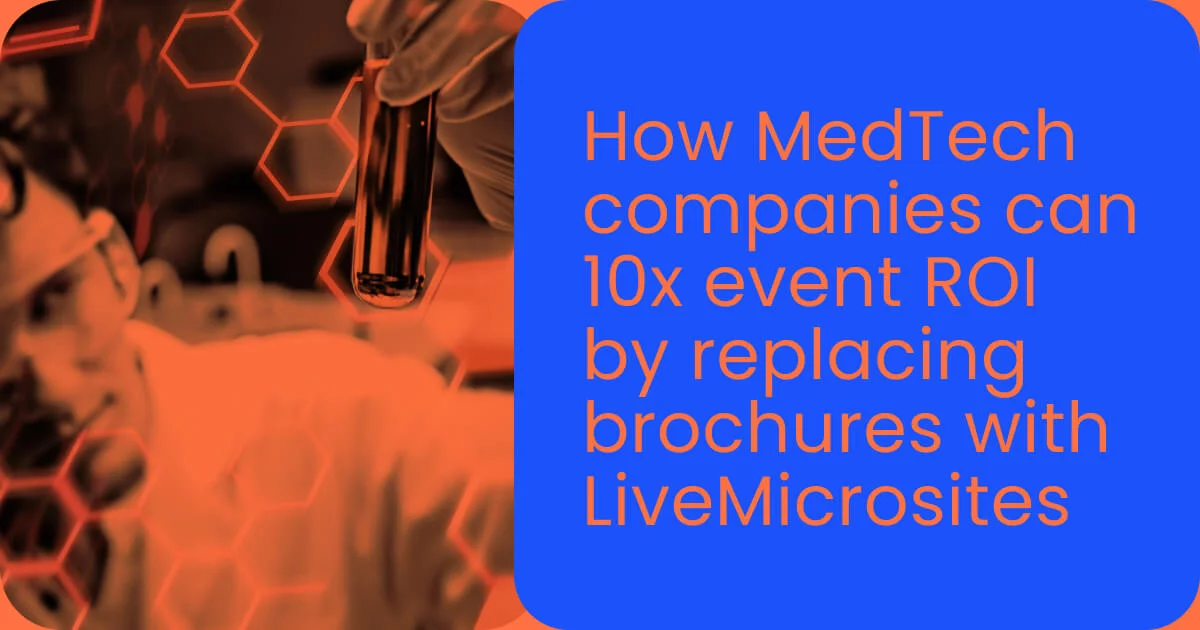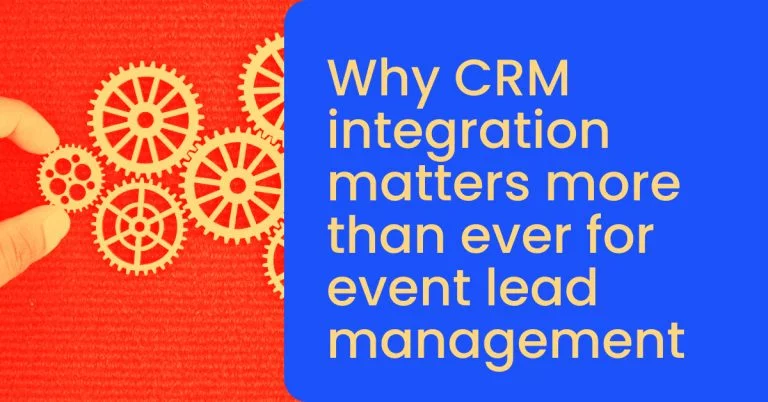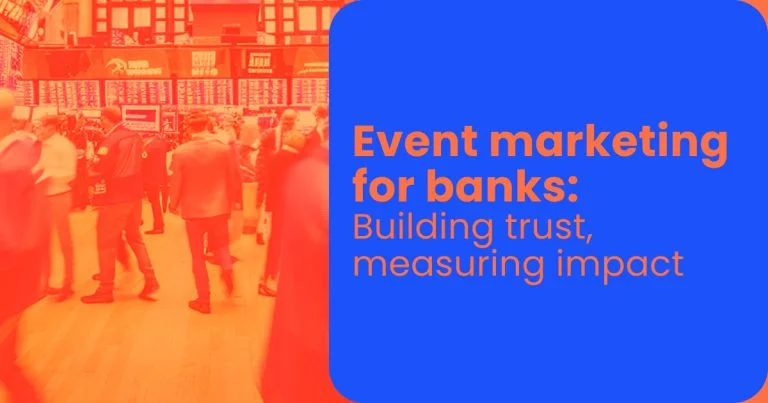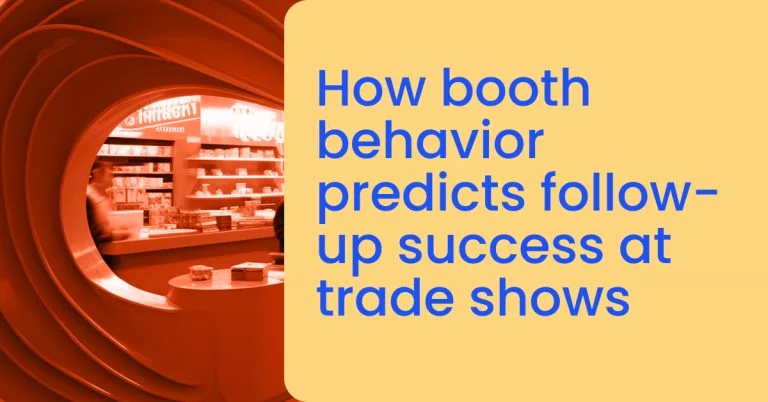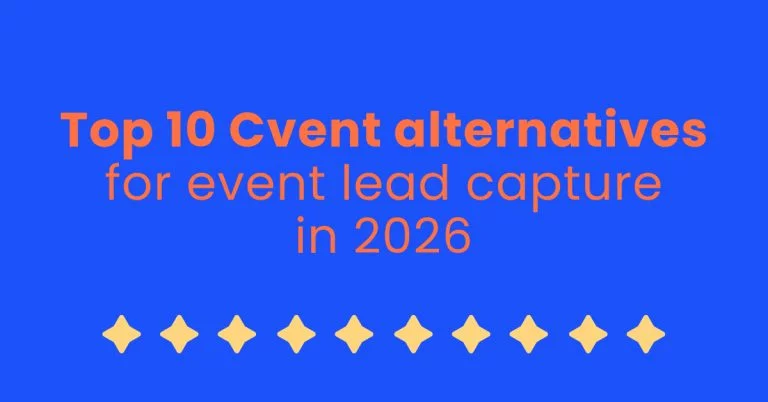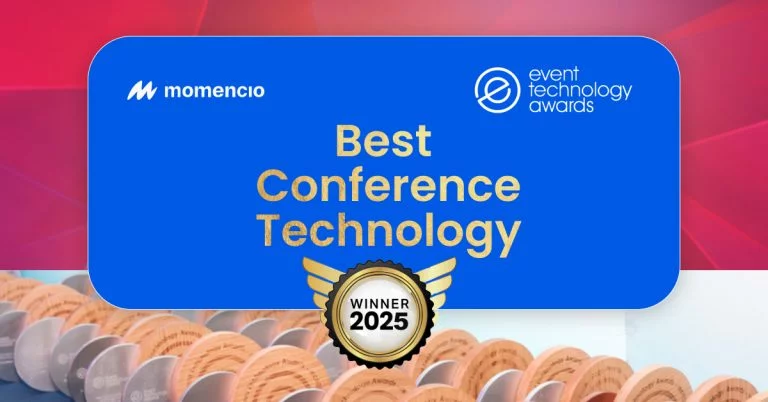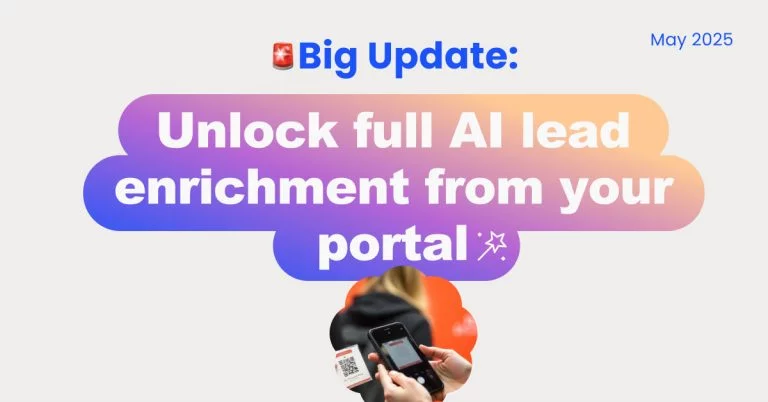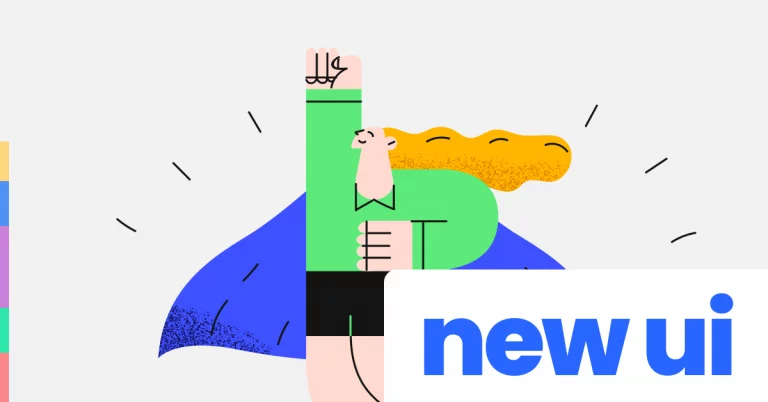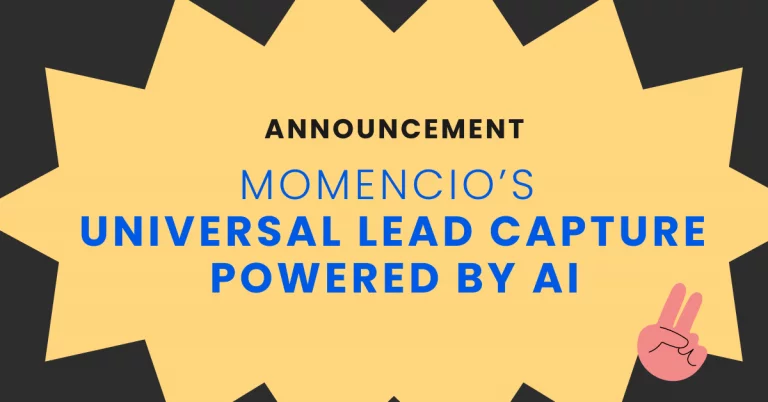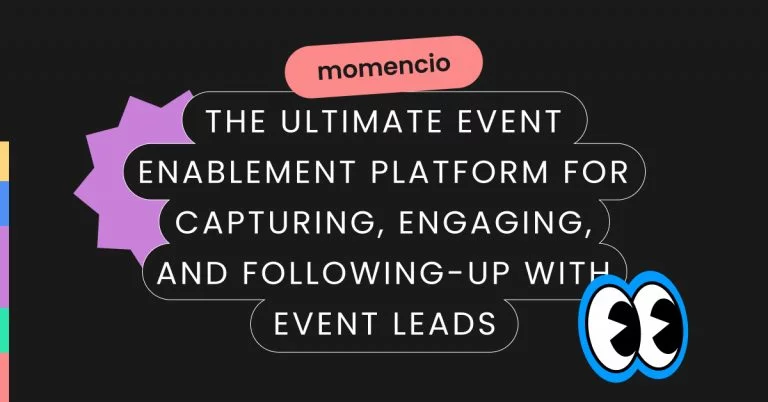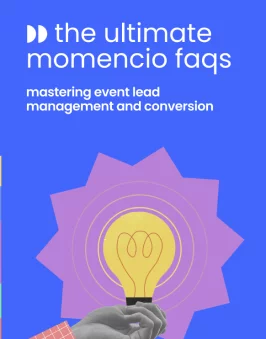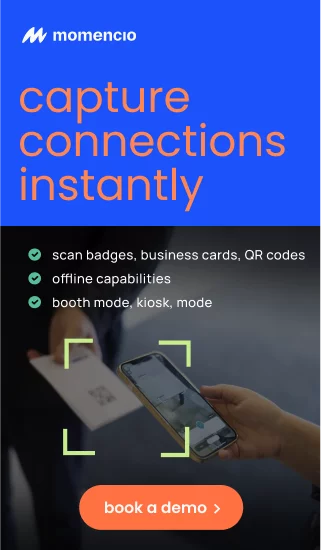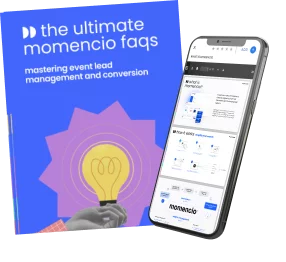MedTech companies invest heavily in healthcare events. In North America alone, more than $4.2 billion is spent each year on conferences, trade shows, and medical congresses, and for good reason. In-person gatherings remain the single most effective way to connect with healthcare professionals. In fact, 45% of HCPs say events are their preferred channel for networking and education.
But if you are a marketer in MedTech industry, you know the frustration that comes next. When leadership spends so heavily on events, they expect to see proof that this spend translates into measurable ROI. Yet, when the dust settles after the event, the metrics look quite murky and prove even more difficult to attribute the booth traffic, brochure distribution, and email addresses collected to revenue. None of these truly show whether your event investment influenced buying decisions, secured new relationships, or moved deals down the pipeline.
The gap is glaring. A recent industry survey found that 63% of life sciences companies admit their lead capture at events is inadequate. That means most MedTech marketers are pouring money into events without the tools to prove value—or worse, relying on outdated tactics like paper brochures that can’t be tracked or updated. For marketers under constant pressure to justify budgets, this is a losing battle.
The problem isn’t the events themselves. Healthcare events are as important as ever. The problem is the outdated methods used to engage and follow up with decision-makers. Brochures, in particular, symbolize everything broken about traditional event marketing: they’re static, unmeasurable, and compliance risks waiting to happen.
In this article, we will show you how marketers in MedTech companies can quickly replace brochures with LiveMicrosites, an interactive, trackable, and infinitely more engaging alternative. Done right, the shift can more than double event ROI by turning fleeting and unattributable booth interactions into measurable, pipeline-driving engagements.
Why brochures are ROI killers in healthcare events
For years, printed brochures have been the default tool at MedTech events. They feel safe. They fill booth shelves and give executives the impression that marketing has come prepared. But in practice, brochures are one of the weakest links in your event strategy, and they actively drag down ROI.
The first issue is compliance risk. In a regulated industry like healthcare, information changes quickly. A claim cleared last quarter may no longer meet current FDA or HIPAA standards. Once brochures are printed, you lose the ability to update them. If a an executive spots outdated messaging after distribution, you are left exposed. Unlike digital assets that can be corrected instantly, brochures lock you into static content that cannot evolve with regulations.
The second issue is lack of tracking. When you hand out a brochure, you have no idea what happens next. Did the hospital administrator read it? Did the surgeon pass it along to a colleague? Or did it land in a recycling bin at the hotel? You’ll never know. This complete absence of data makes it impossible to tie brochures to any measurable outcome.
The third issue is false signals. Brochures inflate booth activity without indicating real interest. A pile of missing brochures looks like success, but without context, it’s meaningless. Did your team actually engage with decision-makers, or did attendees just grab free paper on their way to another booth?
Finally, brochures are resource-heavy. They require design, printing, shipping, and storage, all before a single copy reaches an attendee. Add the hidden costs of waste and disposal, and brochures quickly become one of the least efficient parts of your event budget.
For MedTech marketers already fighting to justify spend, brochures offer little more than surface-level optics. They consume time and money, create compliance liabilities, and leave you with no data to prove value. In today’s ROI-driven climate, that’s an unsustainable strategy.
The compliance-first mandate for MedTech event marketing
If you’ve managed events in the MedTech or healthcare space, you know compliance isn’t just a box to check, it’s the foundation of everything you do. HIPAA, FDA 21 CFR Part 11, GDPR, and other regional privacy laws all converge at the booth. That means every interaction, every piece of content, and every captured lead must meet the strictest regulatory standards. For marketers, the challenge is balancing compliance with creativity.
This is where brochures quickly fall apart. Once a brochure leaves your booth, you lose visibility and control.
Where brochures fail
| Challenge | Brochures | momencio’s LiveMicrosites |
| Content accuracy | Locked once printed; can go out of date instantly | Update assets anytime |
| Visibility | No tracking once handed out | Audit trails log every interaction |
| Data privacy | Risk of unmonitored distribution | Secure storage & consent tracking |
| Reporting | No way to prove what was shared | Full documentation for regulatory audits |
“Every brochure you hand out is content you can’t update, track, or defend in an audit.”
How technology flips the narrative
- Encrypted lead capture ensures data is secure from the first badge scan.
- Consent management builds in documentation automatically.
- Audit trails make regulatory reporting faster and defensible.
- Healthcare CRM integrations keep everything in one secure workflow.
Instead of security and flexibility acting as a brake on creativity, the right technology flips the equation and it becomes a competitive edge. MedTech marketers who embrace security-first digital engagement not only stay safe—they build trust with healthcare professionals who demand integrity as much as innovation.
Introducing LiveMicrosites: personalize your follow-up content for each visitor
Brochures have always been the path of least resistance. They’re easy to produce, executives expect to see them at the booth, and compliance teams can pre-approve them before print. But that “safe” option is exactly why brochures have become such a liability: they lock you into static, unmeasurable, high-risk content that offers no visibility into engagement.
LiveMicrosites change that equation completely.
What is momencio’s LiveMicrosite?
A LiveMicrosite is a personalized digital hub you create instantly for each healthcare professional you meet. Instead of handing over a brochure, you send them a secure link, via email, that contains only the content that matters to them – a demo video, a relevant case study, technical documentation tailored to their specialty, and many other forms of downloadable or interactive resources.
Why they outperform brochures
| Brochures | LiveMicrosites |
| Static, printed once, quickly outdated | Dynamic, updated instantly with content |
| No way to measure engagement | Track every view, click, download in real time |
| High printing/shipping/storage costs | Zero physical costs, scalable across events |
| Disconnected from CRM | Synced with CRM + sales workflows |
What happens when a hospital CIO receives a LiveMicrosite instead of a brochure
At a cardiology conference, when a physician asks about your device’s clinical outcomes, instead of handing a brochure with generic claims, your rep fires up the tablet or smartphone and begins adding digital assets relevant to the physician’s use case in the repository without breaking the rhythm of his conversation with the physician. As soon as he hits send, the physician receives everything they need and more, even before they have walked away from your booth.
The LiveMicrosite could include:
- Case studies
- Product information and digital brochures
- A short explainer video
- Client testimonials
- FAQs on your product
- Interactive content
That evening, the physician revisits the microsite, watches the video twice, and downloads the case study. And as does so, you see it all in real time with momencio’s Intellistream. The next morning, your rep follows up with a personalized message referencing their interest.
momencio’s LiveMicrosites replace passive, wasteful brochures with measurable engagement that proves ROI.
How to turn booth activity into measurable outcomes
Handshakes and booth traffic don’t pay the bills. What MedTech marketers need is a way to take the interest generated at an event and prove it moved the business forward. That requires tools that don’t just capture names but capture intent, track engagement, and give sales teams clear signals on what to do next.
This is where momencio’s ecosystem changes the game:
- Real-time lead enrichment with AI EdgeCapture™
At most MedTech events, valuable context gets lost the moment a badge hits a rep’s hand. With AI EdgeCapture™, that ends. A simple scan auto-creates a complete, enriched lead profile—including name, job title, institution, and contact details—instantly synced to your CRM. No more chasing scribbled notes or typing errors. Your sales team receives usable intelligence before they even leave the booth.
- Personalized follow-up via LiveMicrosites™
Forget generic brochures. LiveMicrosites™ lets your team build personalized digital info hubs in seconds, right at the booth. These hubs can include a device demo, clinical outcomes study, or case study—viewable on any device. Because each link is dynamic, you can update content after the event without re-sharing. You also get granular analytics: who opened the page, what they viewed, for how long.
- Engagement insight through IntelliStream™
Once a LiveMicrosite is shared, IntelliStream™ tracks engagement across every touchpoint—microsites, forms, email links, and more. It maintains identity across devices and sessions, giving you a unified behavior profile. When hundreds of contacts flood your CRM post-event, IntelliStream highlights who’s truly engaged and which content they value most. This clarity shifts your focus from raw lead volume to quality insight.
- Guided sales action with AI IntelliSense™
High activity means little without direction. AI IntelliSense™ ranks leads in real time—based on engagement patterns, revisit frequency, and asset interaction—and provides context-sensitive next actions for sales reps. Instead of generic follow-up, reps get tailored nudges: who to call, what content to reference, and when to strike. That turns leads into purposeful interactions, not just check-ins.
Why this is crucial for you
This isn’t about cool tech, it is about closing the gap between event activity and real business outcomes. With AI EdgeCapture™, LiveMicrosites™, IntelliStream™, and AI IntelliSense™ working together, your event investment transforms:
- From scattered data to unified, usable insights.
- From static collateral to dynamic, updateable digital content.
- From blind follow-ups to personalized, timely outreach.
No more chasing numbers. Insurance-level accuracy. Clear paths to pipeline. That’s how MedTech marketers finally prove event ROI.
How to overcome objections from cross-functional teams
Shifting from brochures to digital engagement isn’t just a marketing decision—it’s a collective one. Inside most MedTech organizations, marketers face resistance from colleagues who are used to “the way things have always been done.” If you’ve ever heard pushback like “but doctors like paper” or “our team won’t learn a new system”, you are not alone. The key is to anticipate these objections and arm yourself with responses that win the room.
“Our audience prefers something tangible”
Reality check: healthcare professionals don’t carry stacks of brochures home.
They’re digital-first when it comes to learning and decision-making. A LiveMicrosite is still tangible—it’s just delivered in the format they prefer: mobile, searchable, and always updated. Show your colleagues how physicians revisit demo videos, download studies, and re-engage days after the event. That’s far more “tangible” than paper left in a hotel bin.
“We’ve always done it this way”
This is nostalgia disguised as strategy. Remind stakeholders that the stakes are higher now. Budgets are under scrutiny. Leadership wants proof of outcomes, not evidence of printing spend. Share case studies: companies that shifted to digital reporting saw measurable gains—like higher follow-up engagement and 3x ROI on event investment. Familiar methods aren’t safer; they’re simply less effective.
“It will be too complex to implement”
Implementation takes weeks, not quarters. The process is straightforward: configuration, team training, CRM integration, go-live. Momencio’s integrations with Salesforce Health Cloud, Veeva CRM, and Epic mean teams keep their current workflows. Your role is to show that the lift is lighter than managing boxes of brochures, shipping logistics, and compliance reviews for every reprint.
“What about cost?”
Printing, shipping, and disposing of brochures is one of the least efficient parts of your budget. By replacing them with digital microsites, you cut those hard costs while adding the ability to prove impact. Instead of explaining spend, you can show leadership a dashboard of engagement, conversion, and pipeline. That shifts the cost conversation from “Why are we spending this?” to “Why didn’t we do this sooner?”
The point isn’t to argue with colleagues. It’s to redirect their concerns into outcomes they already care about: usability, trust, efficiency, and ROI.
Conclusion – replace paper with proof
Brochures may feel safe, but they deliver nothing you can defend in front of leadership. They cannot be updated, they cannot be measured, and they cannot show you who is genuinely evaluating your product. As long as brochures are the center of your booth strategy, you are left explaining spend instead of demonstrating results.
LiveMicrosites flip that equation. They let you hand every healthcare professional a resource that is personal, current, and visible in its impact. You know who opened it, what they viewed, and how often they came back. That insight is not decoration—it is the evidence your leadership has been asking for.
When you layer LiveMicrosites with tools like AI EdgeCapture™, IntelliStream™, and AI IntelliSense™, you replace guesswork with a closed loop: leads captured with accuracy, engagement tracked in real time, and sales guided on where to act first. This is how you stop reporting vanity metrics and start reporting pipeline.
The companies that adopt this model aren’t just cutting print costs. They are doubling their return on events because every interaction can now be traced, scored, and advanced. For a MedTech marketer, that’s the difference between fighting for budget and proving that events are one of the most accountable growth channels in the business.
The brochures can stay in the recycle bin. What you bring back from your next event should be more than boxes of unused paper. It should be evidence that every conversation mattered—and the data to prove it.
